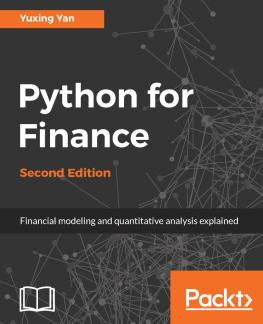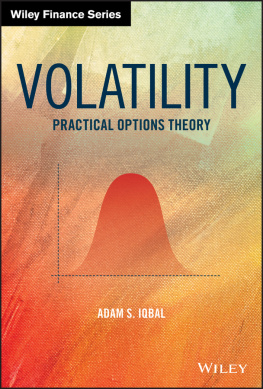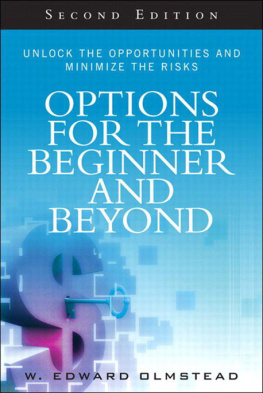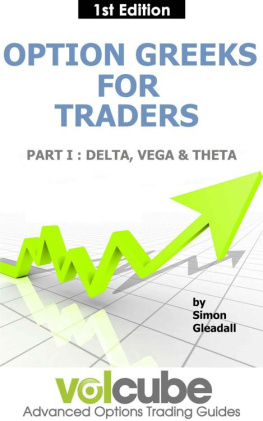Pierino Ursone - How to Calculate Options Prices and Their Greeks: Exploring the Black Scholes Model from Delta to Vega
Here you can read online Pierino Ursone - How to Calculate Options Prices and Their Greeks: Exploring the Black Scholes Model from Delta to Vega full text of the book (entire story) in english for free. Download pdf and epub, get meaning, cover and reviews about this ebook. year: 2015, publisher: Wiley, genre: Home and family. Description of the work, (preface) as well as reviews are available. Best literature library LitArk.com created for fans of good reading and offers a wide selection of genres:
Romance novel
Science fiction
Adventure
Detective
Science
History
Home and family
Prose
Art
Politics
Computer
Non-fiction
Religion
Business
Children
Humor
Choose a favorite category and find really read worthwhile books. Enjoy immersion in the world of imagination, feel the emotions of the characters or learn something new for yourself, make an fascinating discovery.

- Book:How to Calculate Options Prices and Their Greeks: Exploring the Black Scholes Model from Delta to Vega
- Author:
- Publisher:Wiley
- Genre:
- Year:2015
- Rating:3 / 5
- Favourites:Add to favourites
- Your mark:
How to Calculate Options Prices and Their Greeks: Exploring the Black Scholes Model from Delta to Vega: summary, description and annotation
We offer to read an annotation, description, summary or preface (depends on what the author of the book "How to Calculate Options Prices and Their Greeks: Exploring the Black Scholes Model from Delta to Vega" wrote himself). If you haven't found the necessary information about the book — write in the comments, we will try to find it.
A unique, in-depth guide to options pricing and valuing their greeks, along with a four dimensional approach towards the impact of changing market circumstances on options
How to Calculate Options Prices and Their Greeks is the only book of its kind, showing you how to value options and the greeks according to the Black Scholes model but also how to do this without consulting a model. Youll build a solid understanding of options and hedging strategies as you explore the concepts of probability, volatility, and put call parity, then move into more advanced topics in combination with a four-dimensional approach of the change of the P&L of an option portfolio in relation to strike, underlying, volatility, and time to maturity. This informative guide fully explains the distribution of first and second order Greeks along the whole range wherein an option has optionality, and delves into trading strategies, including spreads, straddles, strangles, butterflies, kurtosis, vega-convexity , and more. Charts and tables illustrate how specific positions in a Greek evolve in relation to its parameters, and digital ancillaries allow you to see 3D representations using your own parameters and volumes.
The Black and Scholes model is the most widely used option model, appreciated for its simplicity and ability to generate a fair value for options pricing in all kinds of markets. This book shows you the ins and outs of the model, giving you the practical understanding you need for setting up and managing an option strategy.
Understand the Greeks, and how they make or break a strategy
See how the Greeks change with time, volatility, and underlying
Explore various trading strategies
Implement options positions, and more
Representations of option payoffs are too often based on a simple two-dimensional approach consisting of P&L versus underlying at expiry. This is misleading, as the Greeks can make a world of difference over the lifetime of a strategy. How to Calculate Options Prices and Their Greeks is a comprehensive, in-depth guide to a thorough and more effective understanding of options, their Greeks, and (hedging) option strategies.
Pierino Ursone: author's other books
Who wrote How to Calculate Options Prices and Their Greeks: Exploring the Black Scholes Model from Delta to Vega? Find out the surname, the name of the author of the book and a list of all author's works by series.





